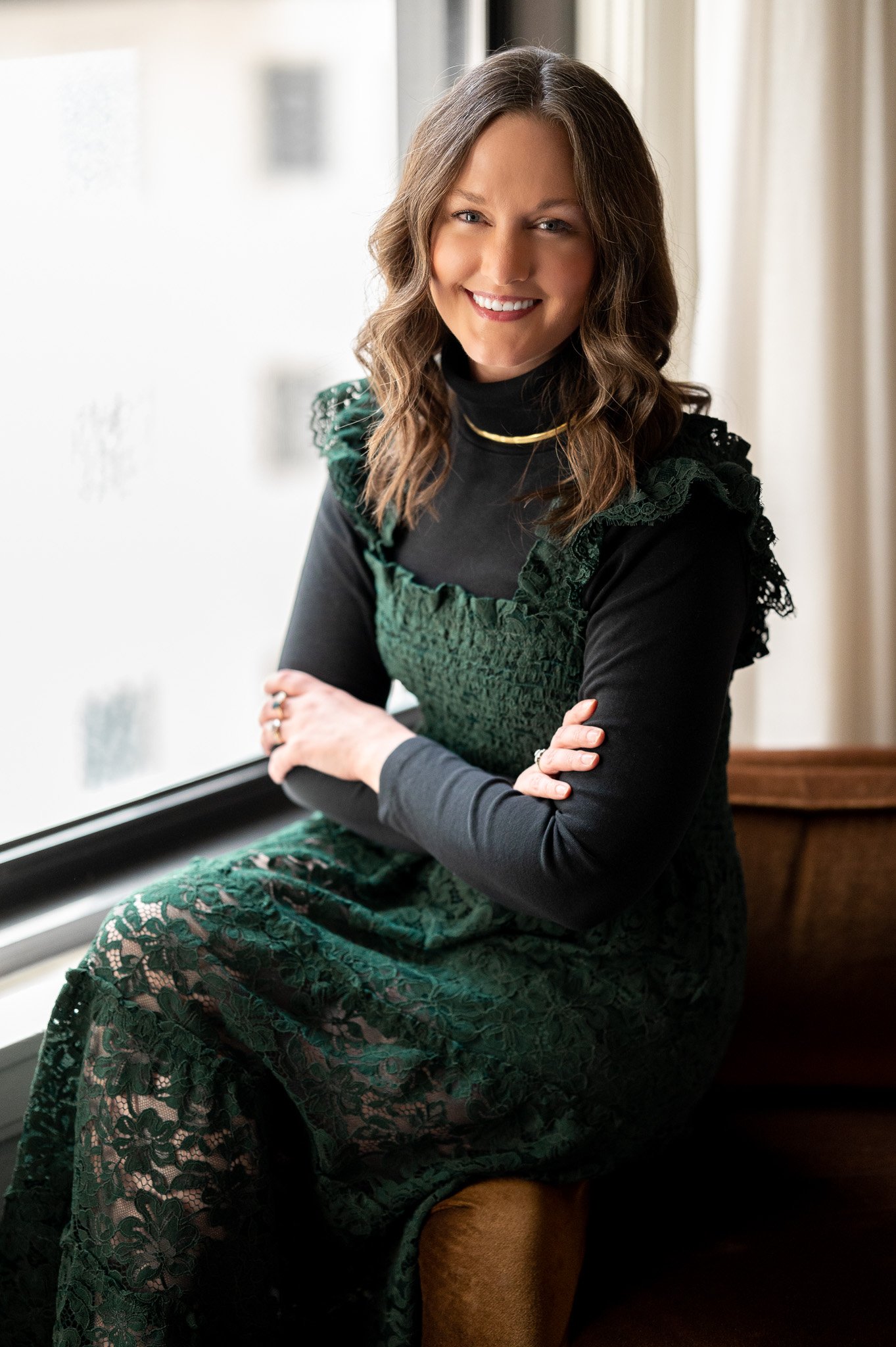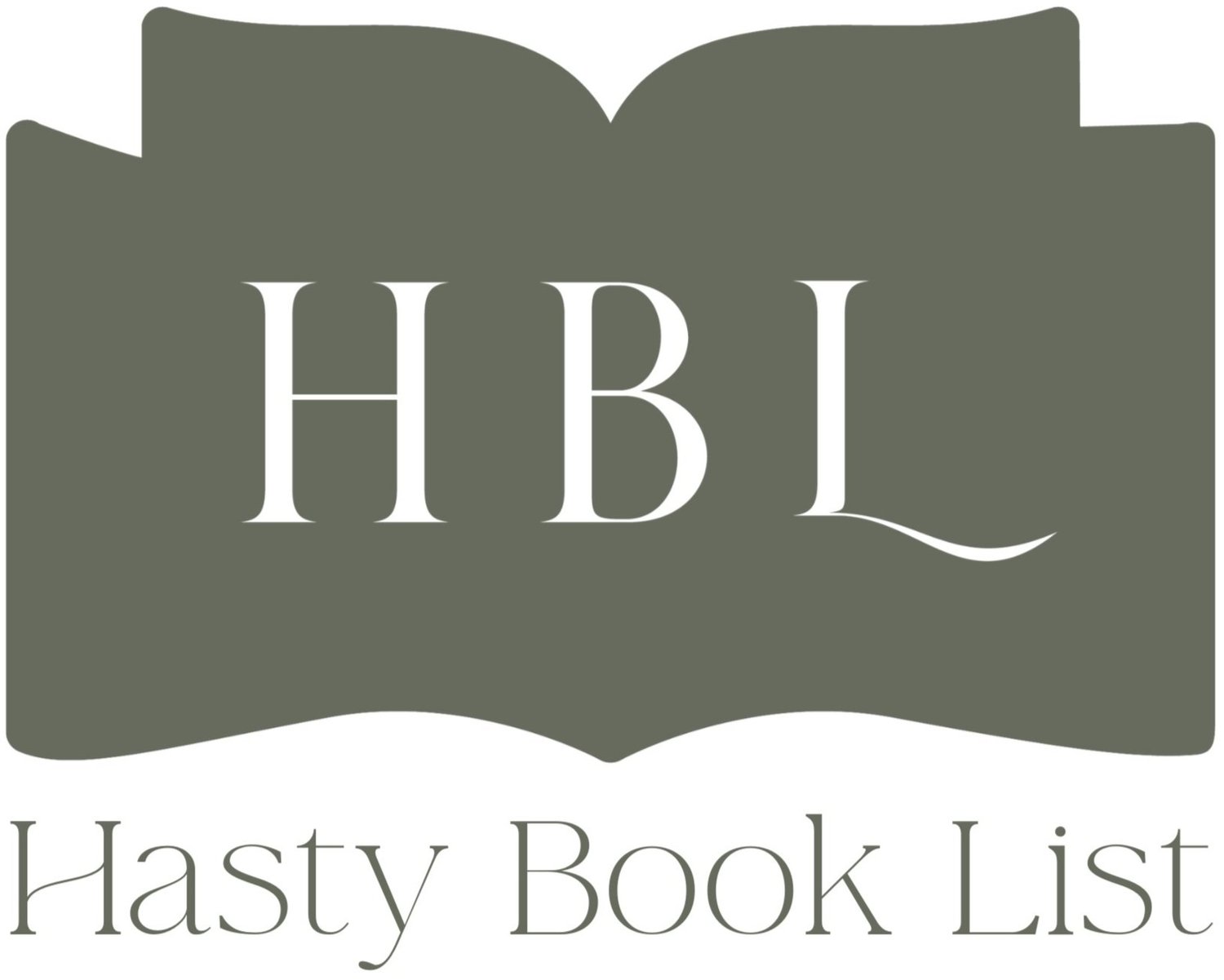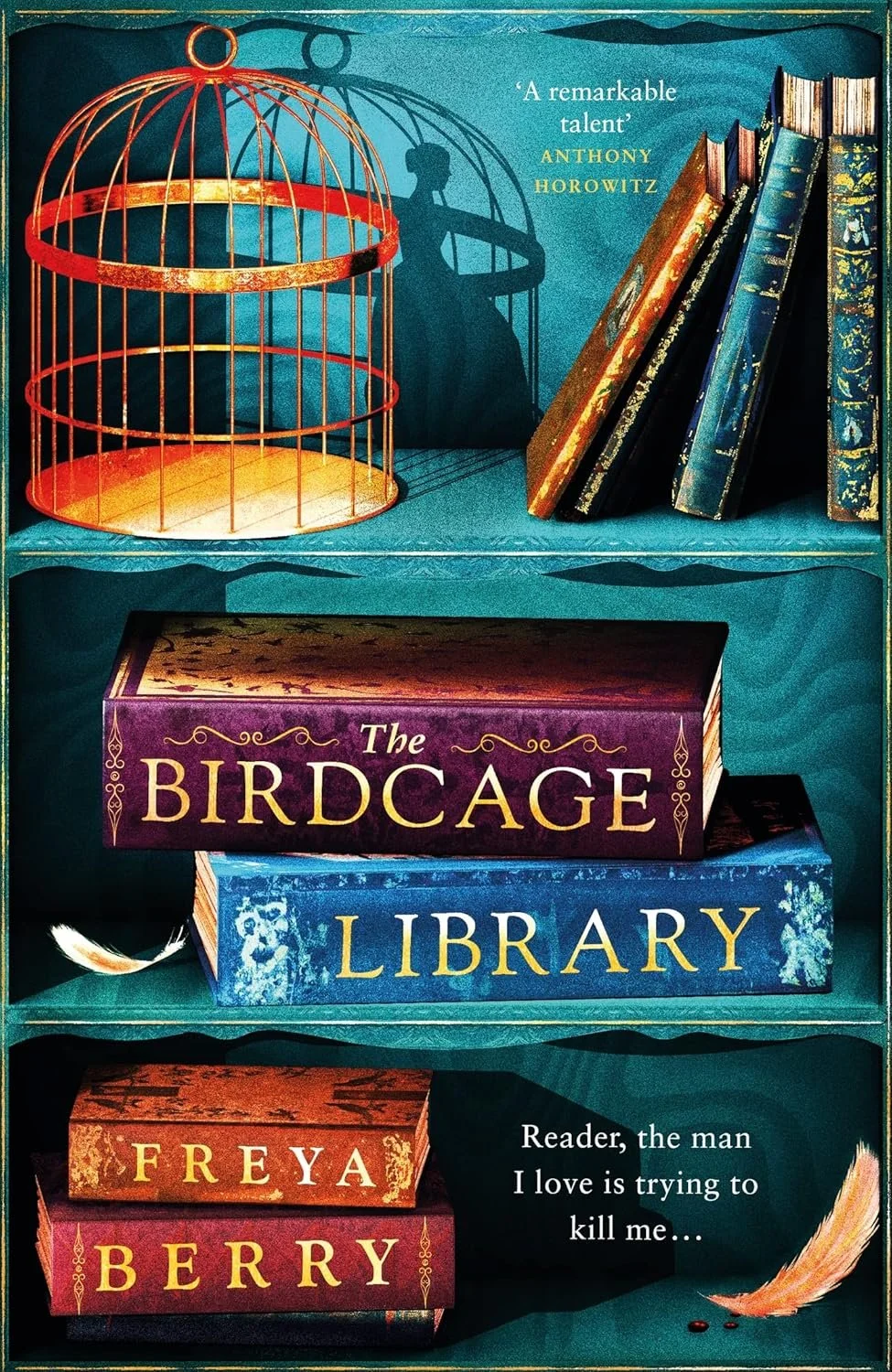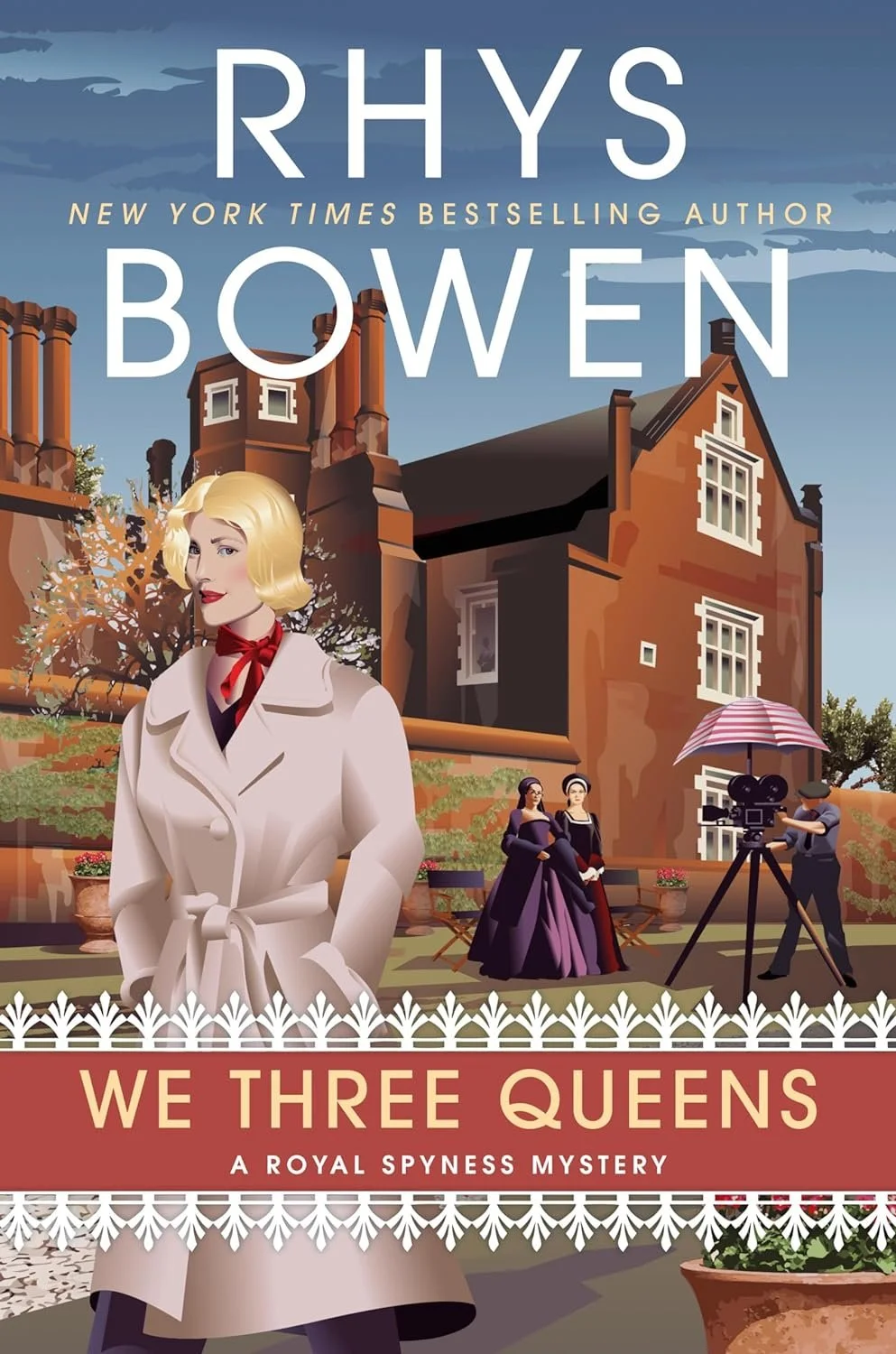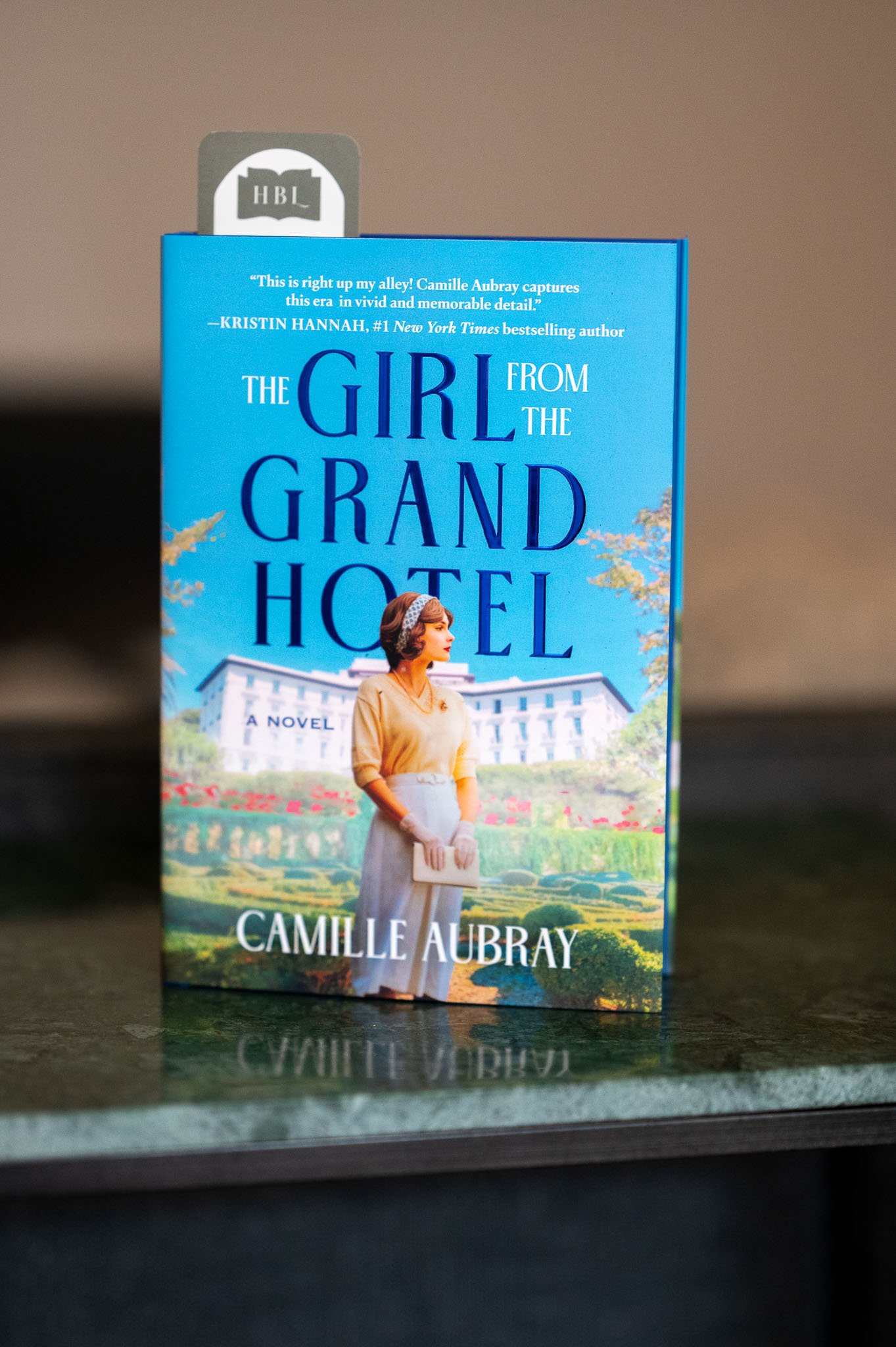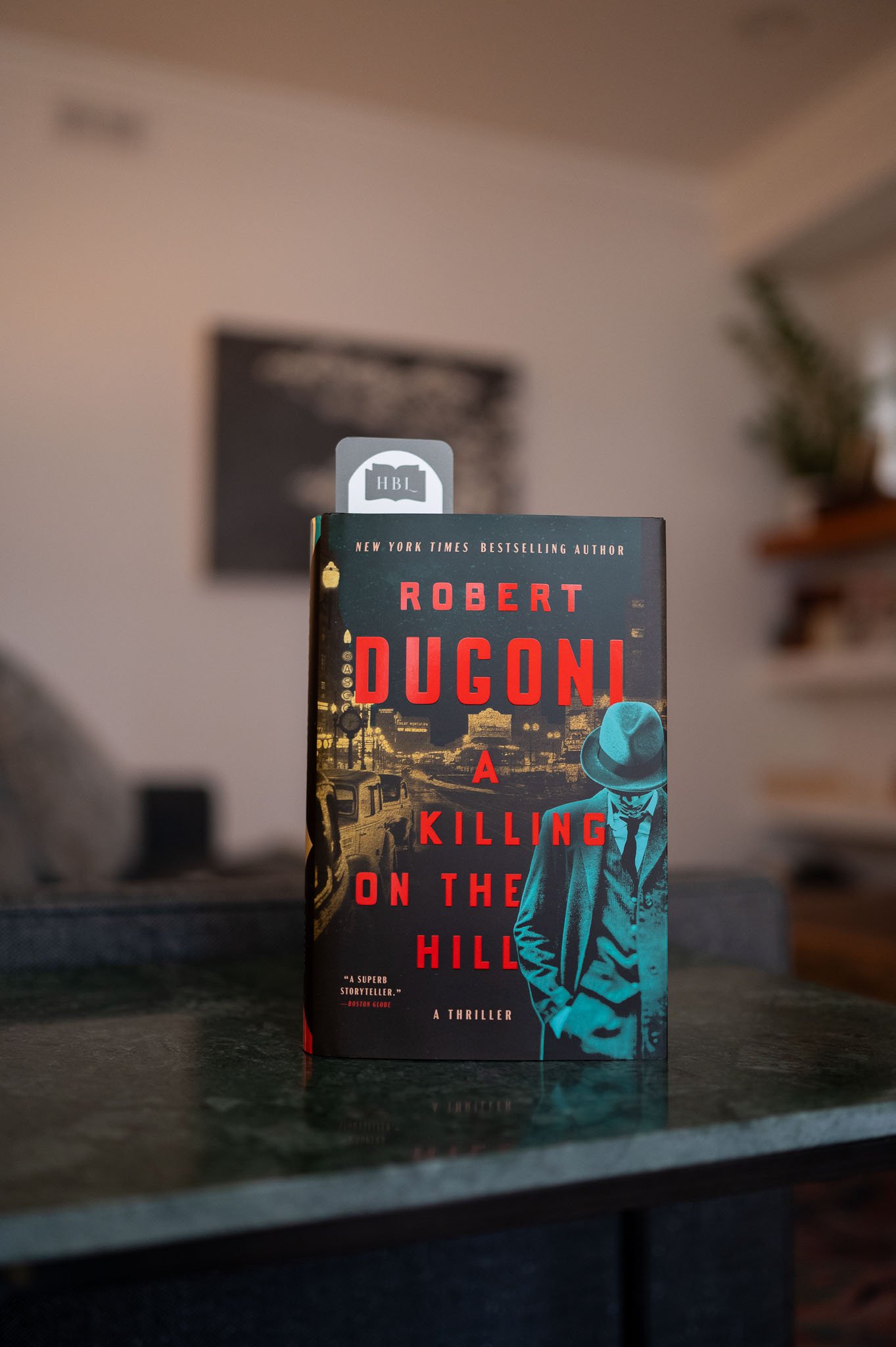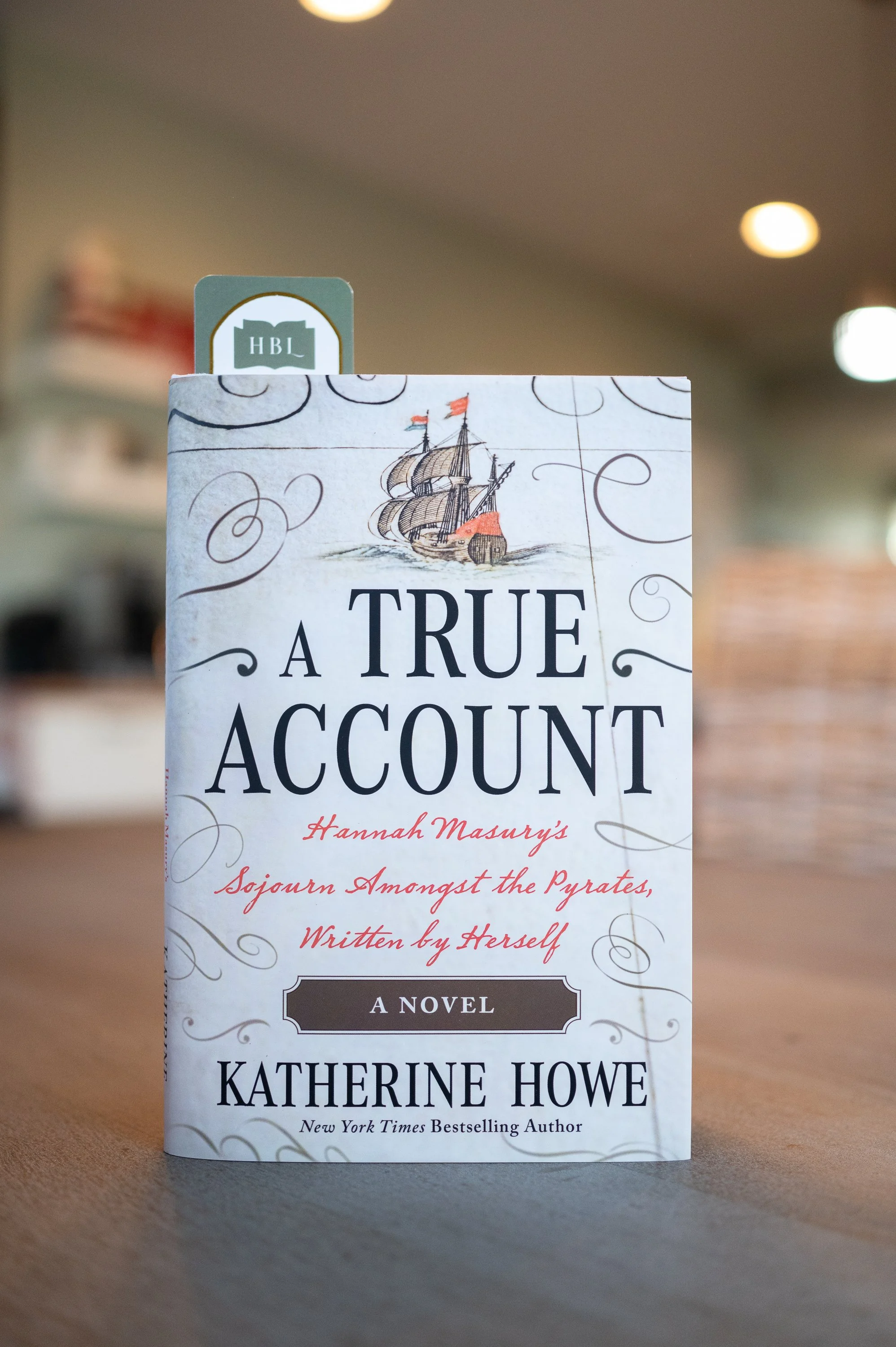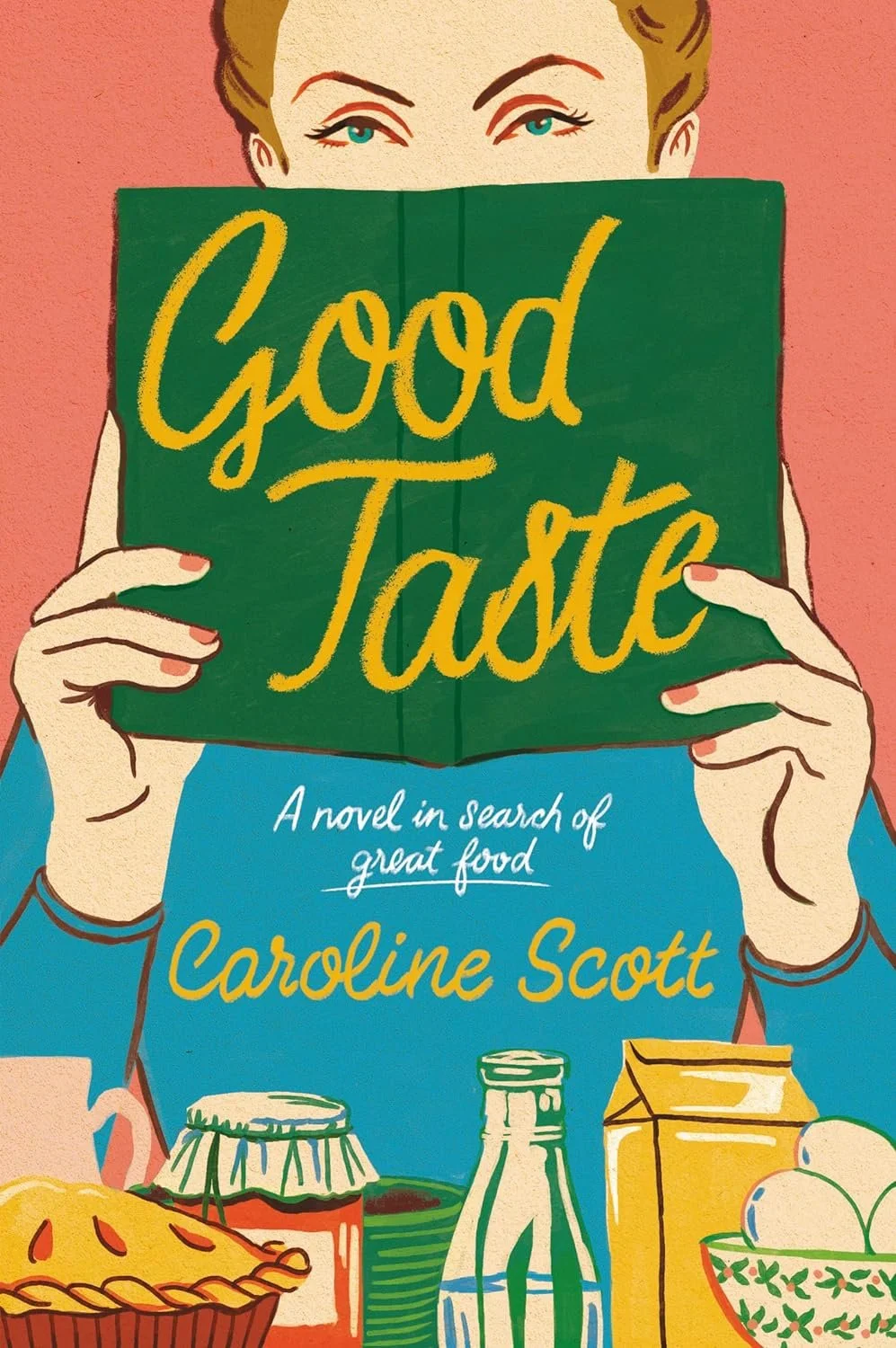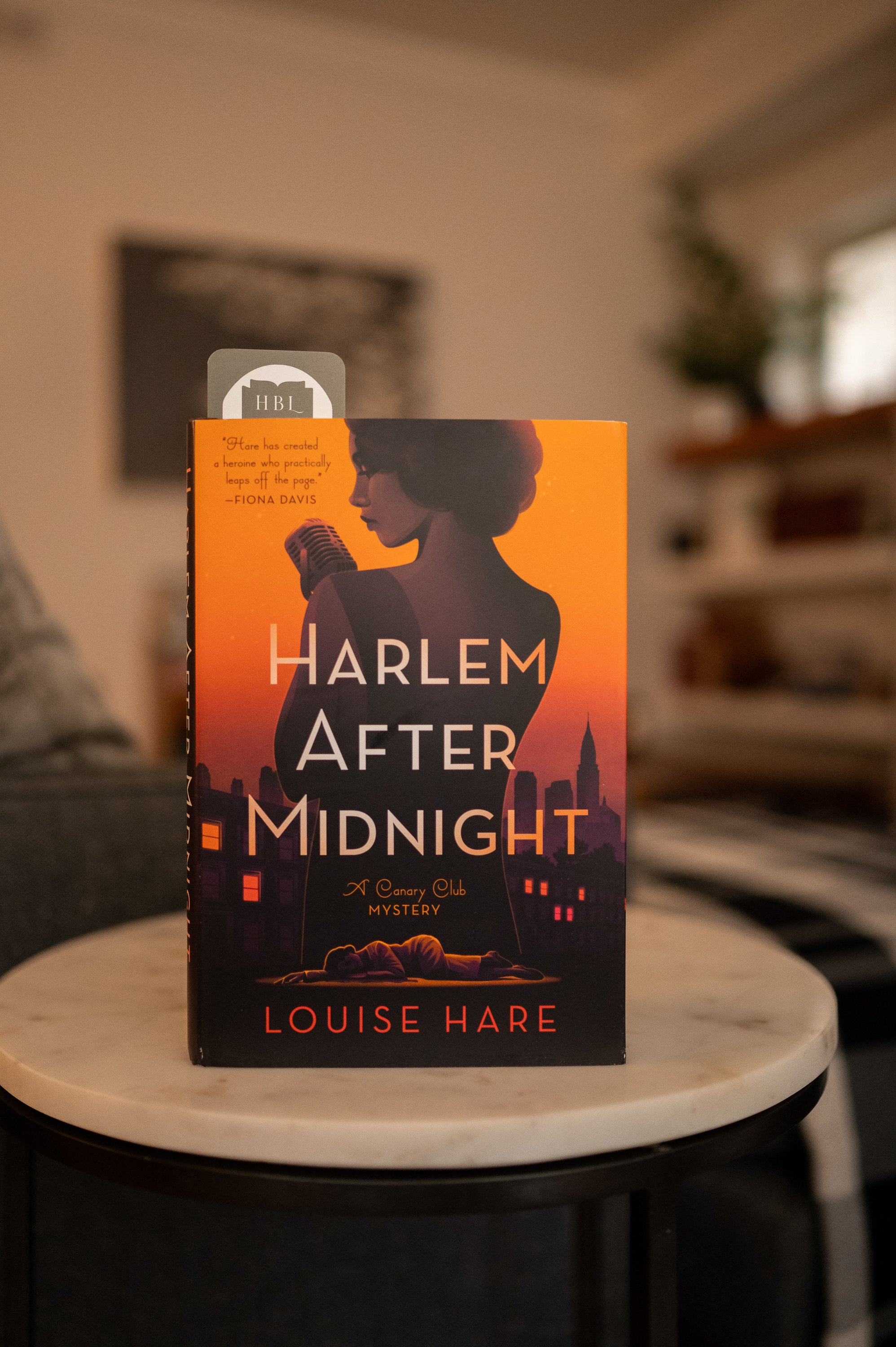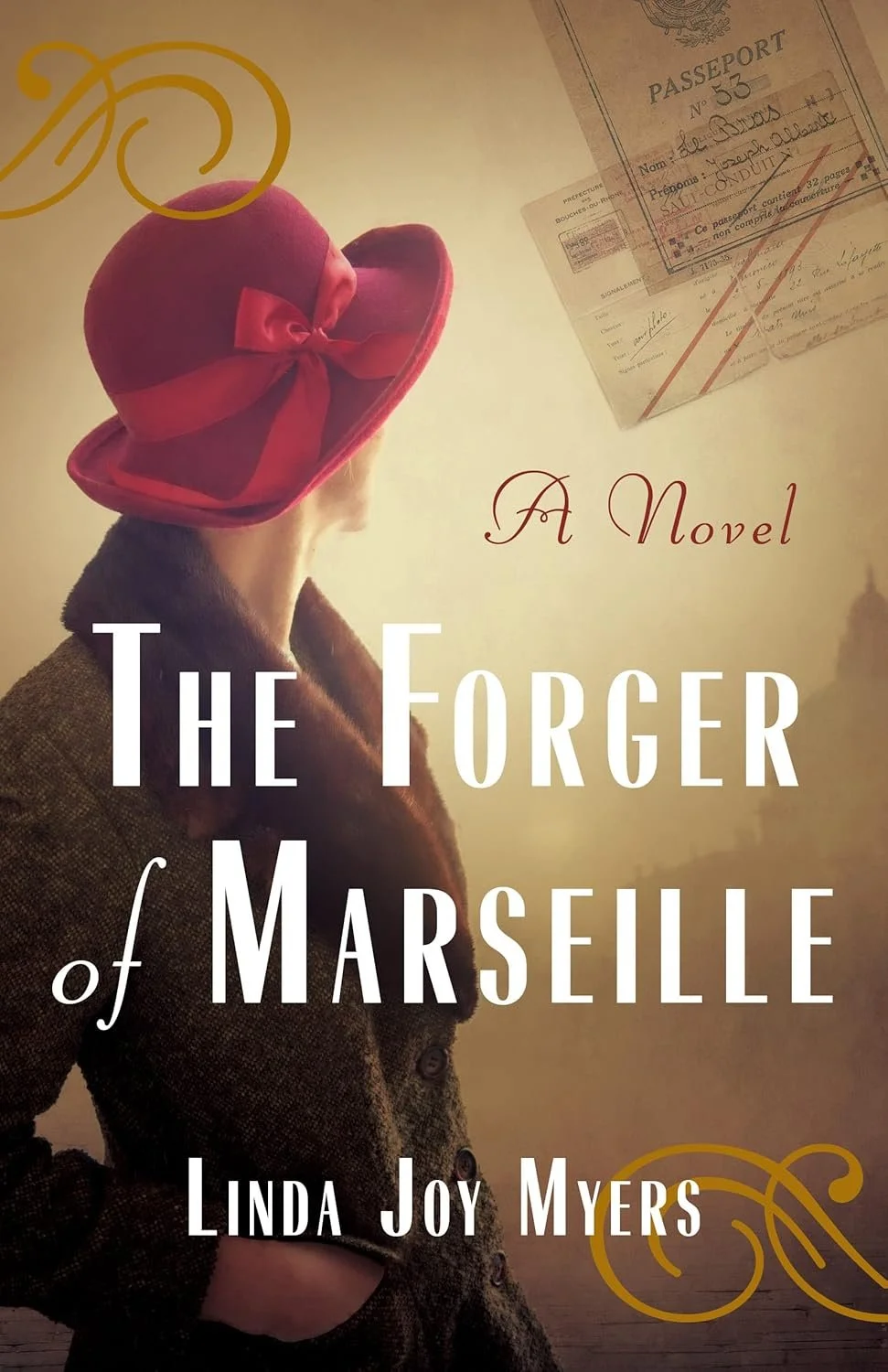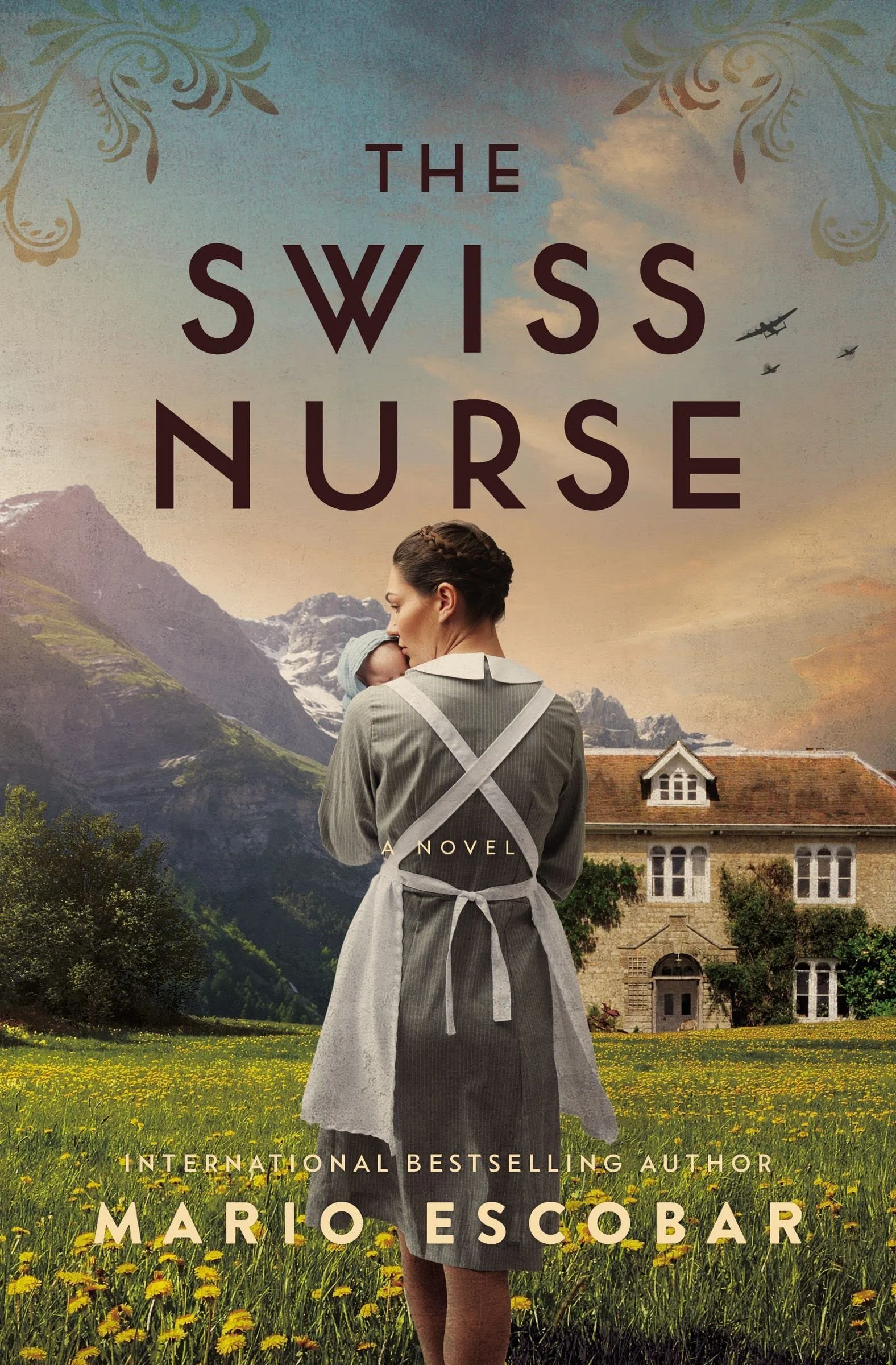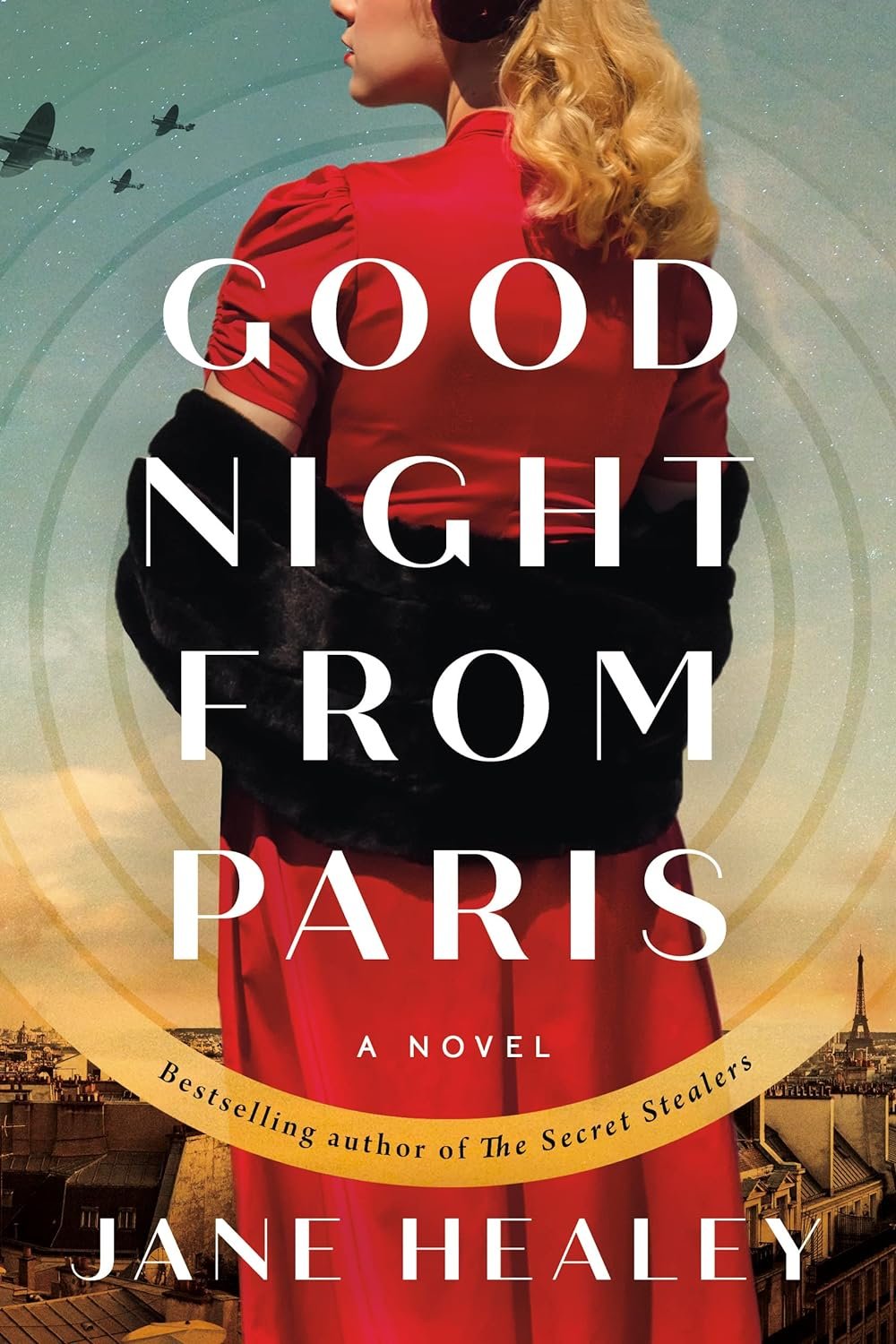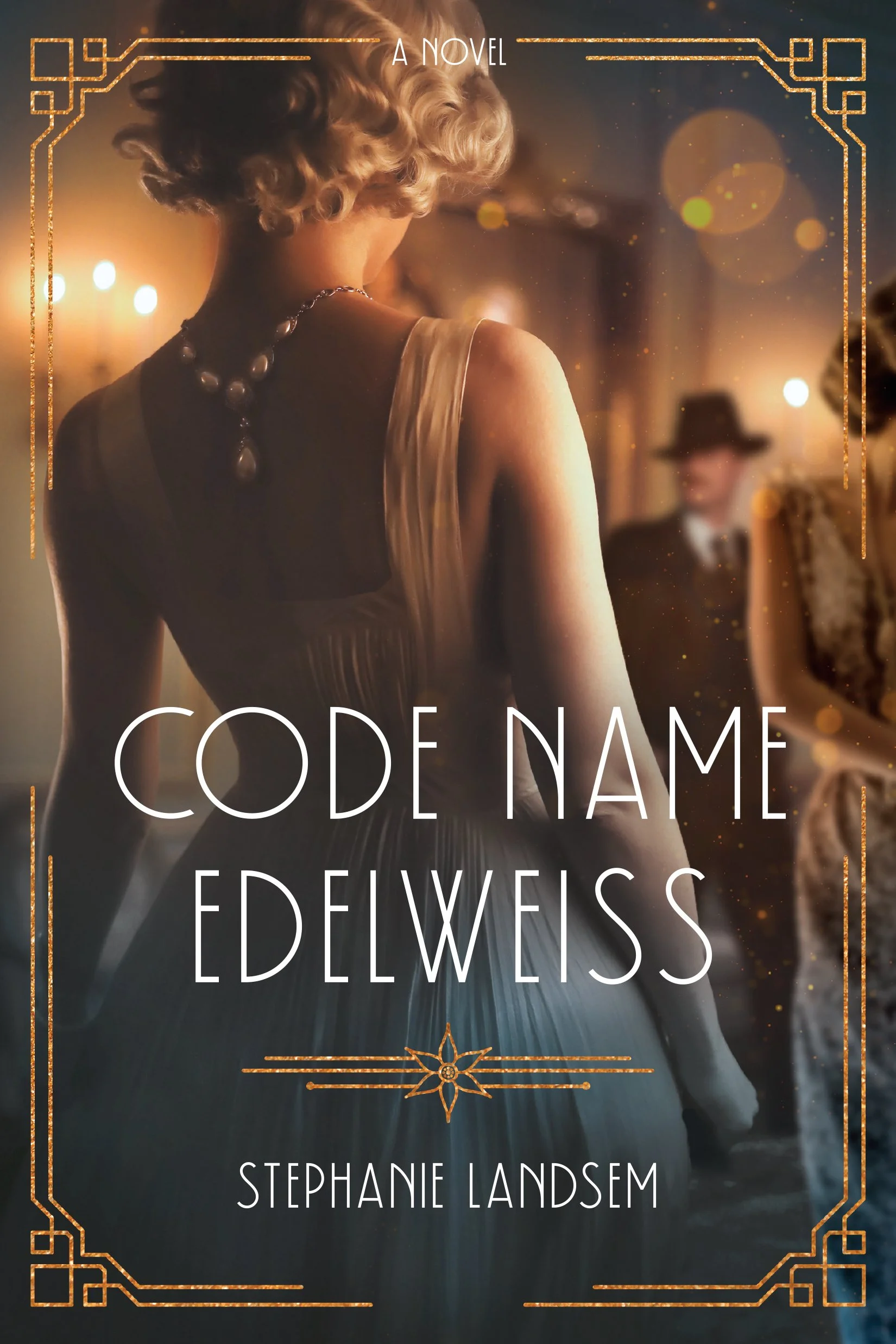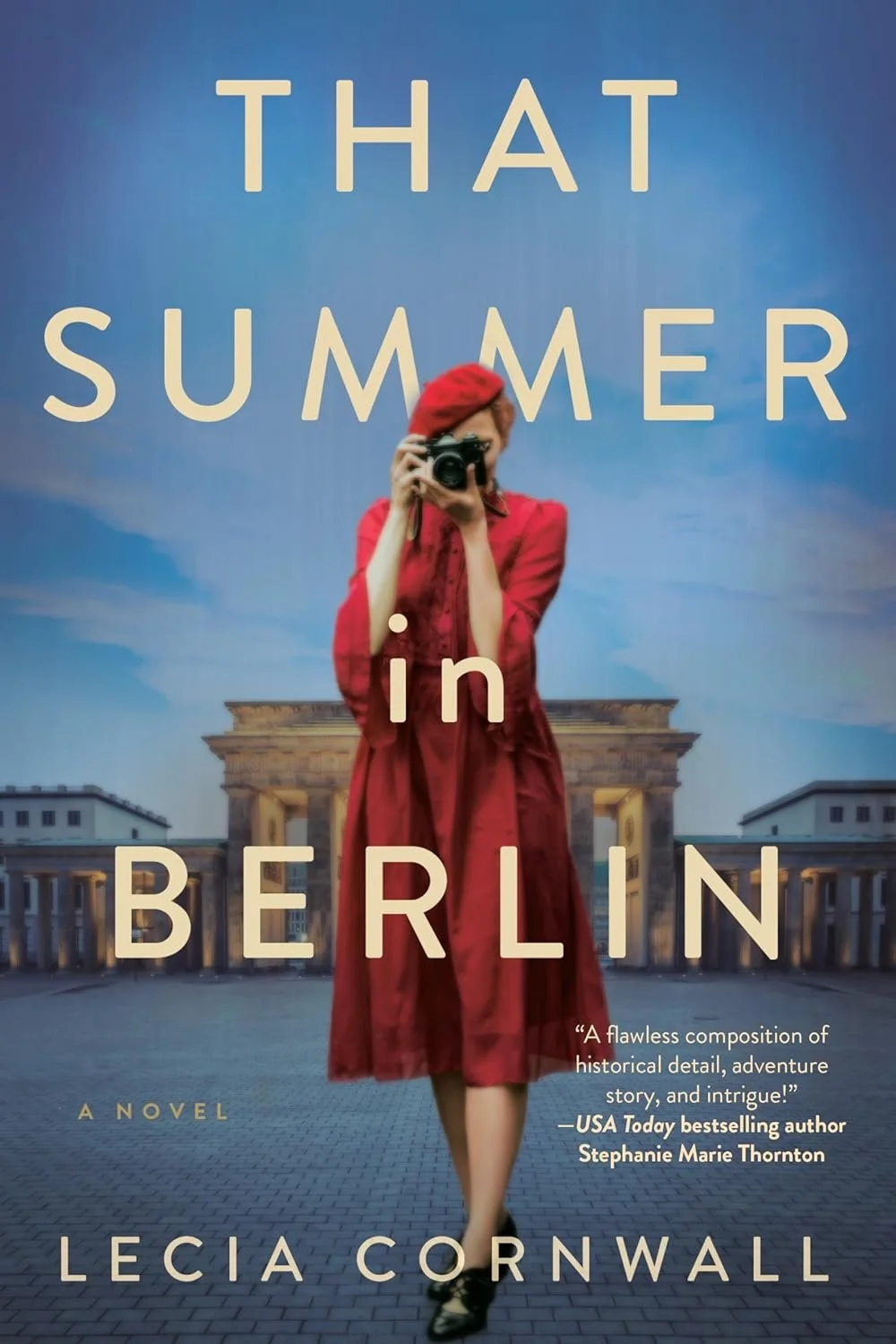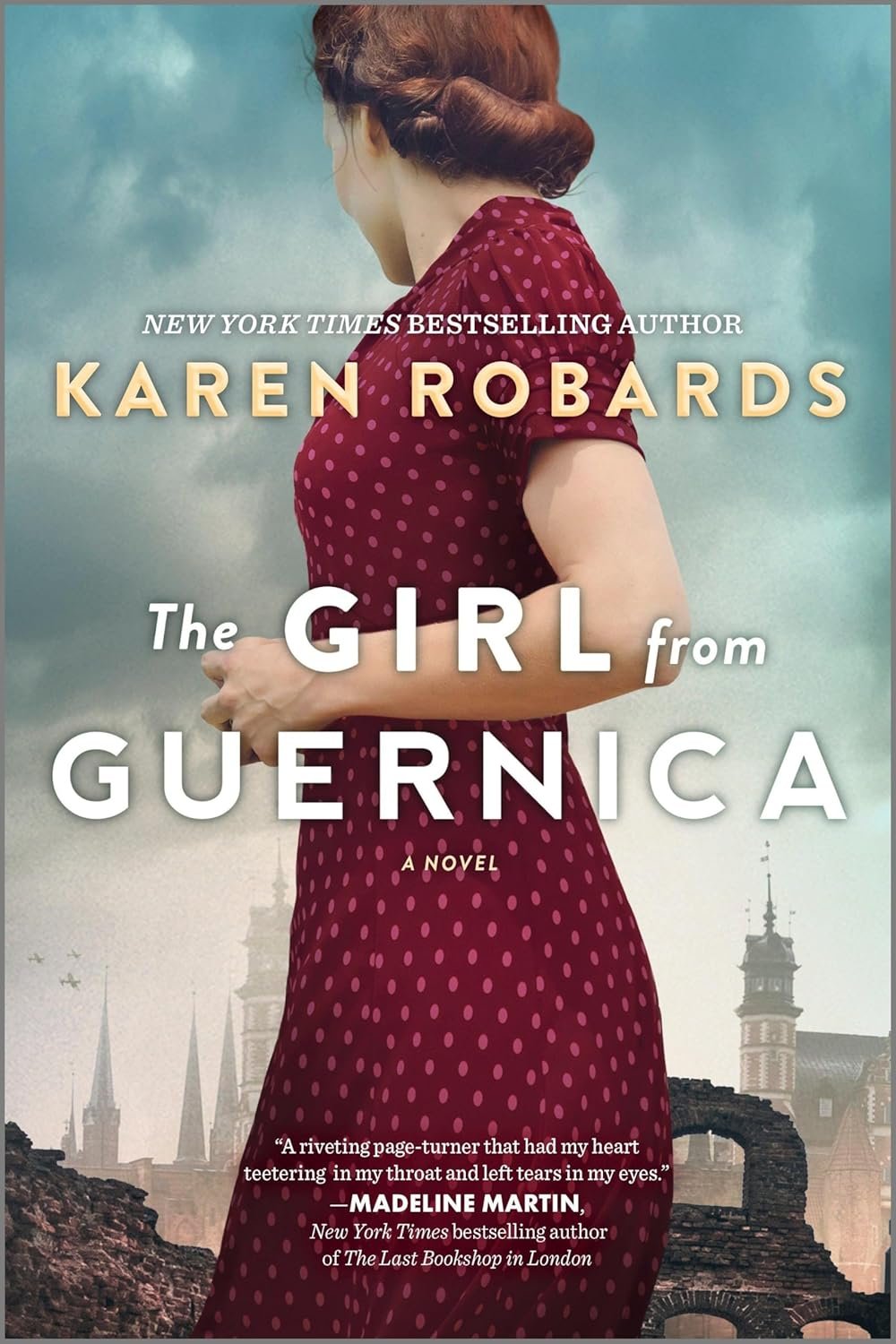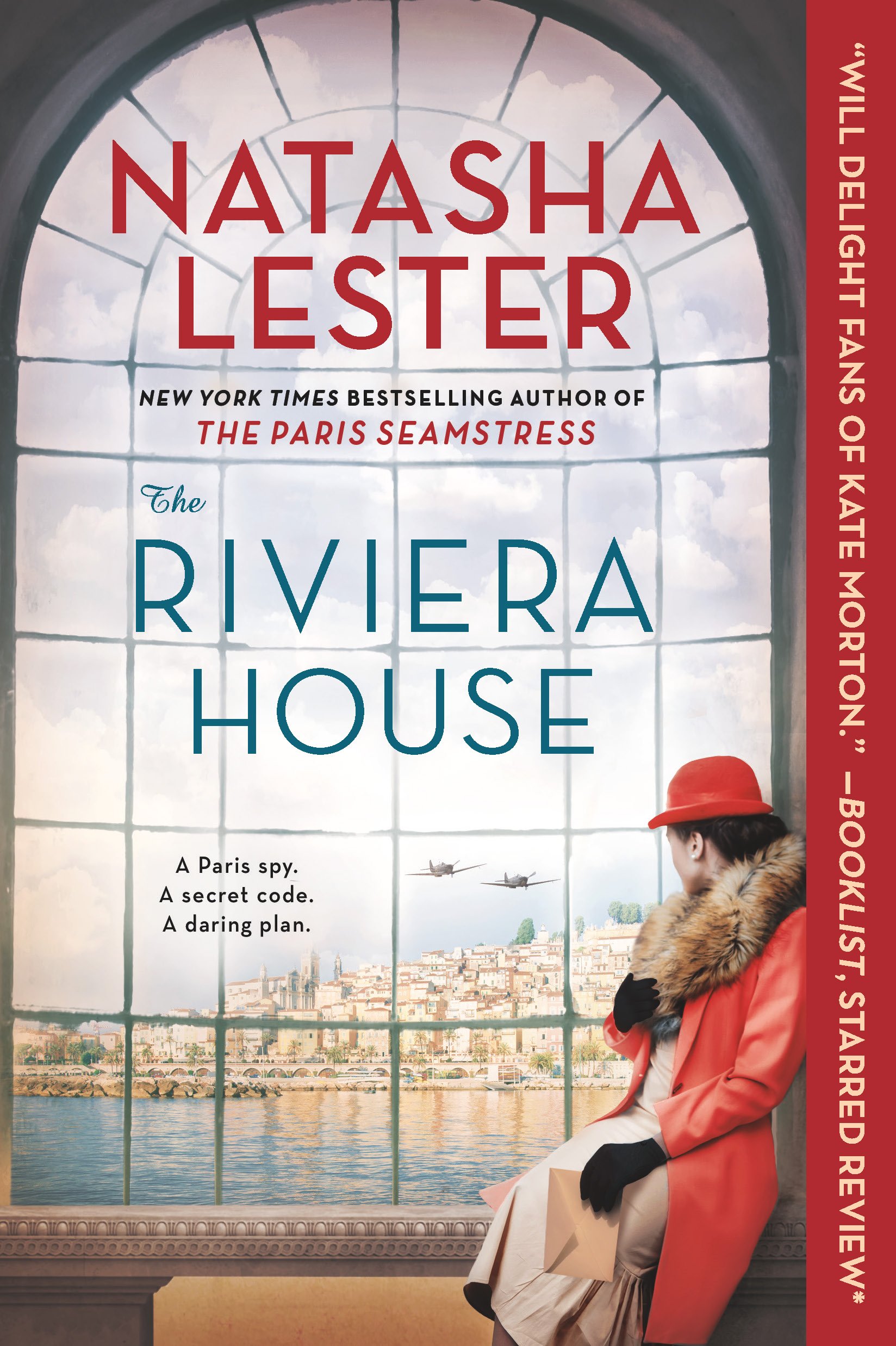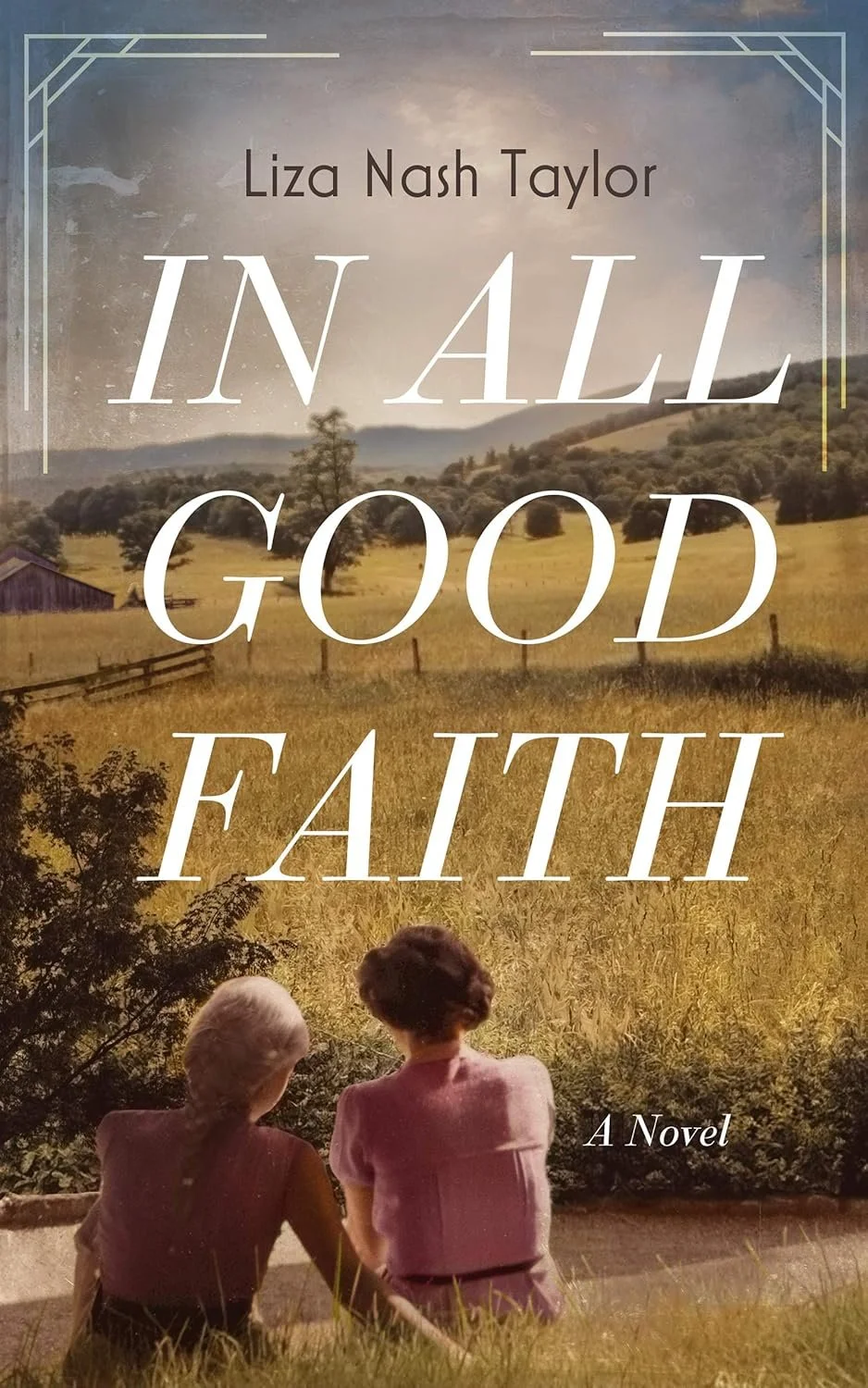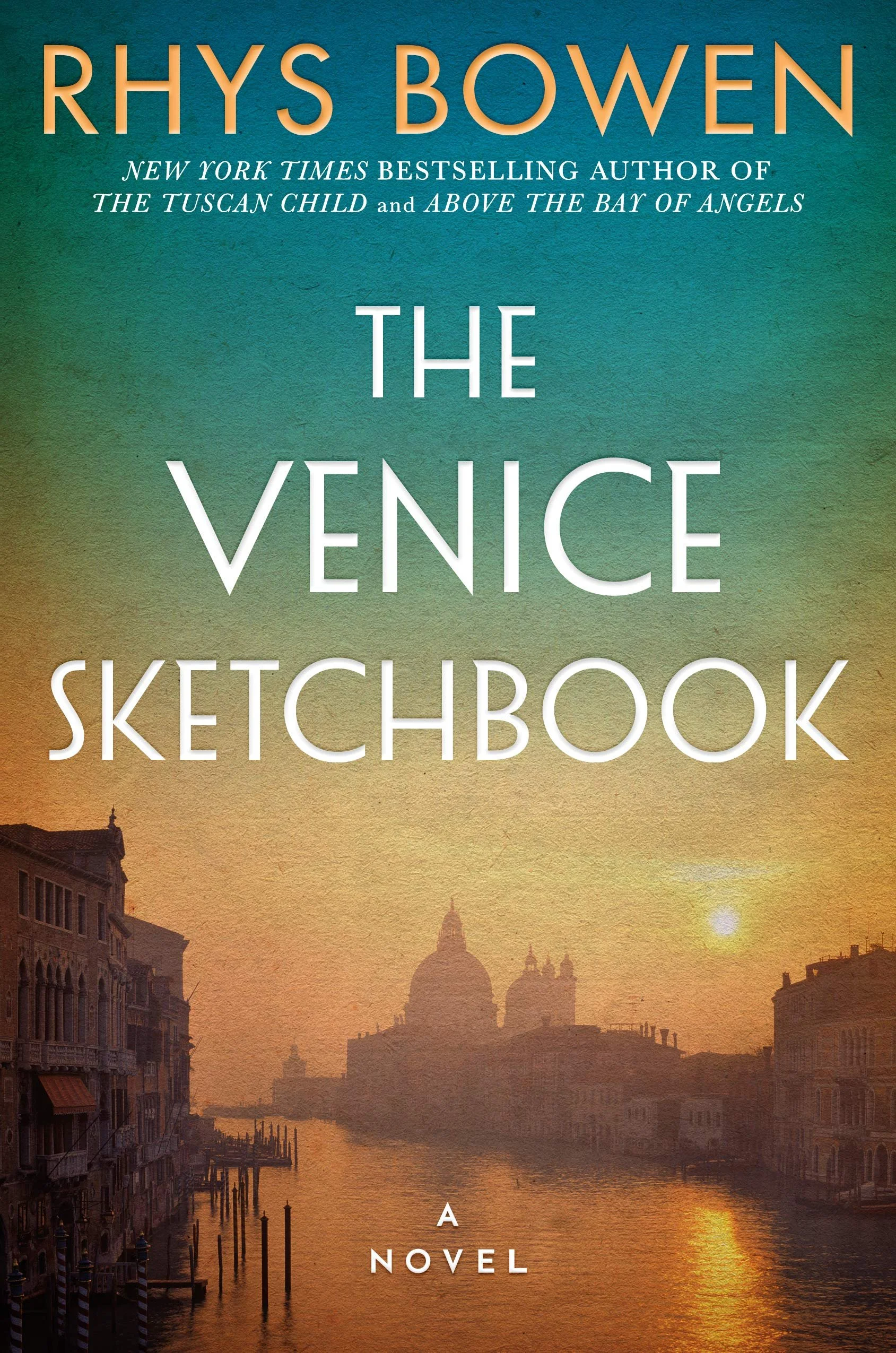Books Set in the 1930s
Books Set in the 1930s
I want to note that I do not get paid to do these posts, I just love authors and the book industry. However, they do take time and energy to create. If you want to donate a few dollars to my coffee fund, which keeps this blog going, you can do so here: https://venmo.com/AshleyHasty or here: http://paypal.me/hastybooklist.
Nostalgia for the 1930s: A Glimpse Into a Decade of Resilience and Glamour
The 1930s were a decade defined by stark contrasts—on one hand, the Great Depression gripped the world, forcing people to tighten their belts and reimagine daily life. On the other hand, it was an era that birthed stunning art, glamorous fashion, and a renewed sense of community. This paradox gives the 1930s a unique appeal, with a mix of hardship and hope that still resonates today.
The Rise of Iconic Cinema
Hollywood played a pivotal role in shaping the cultural landscape of the 1930s. As the world faced economic hardships, people found escapism in the "Golden Age" of cinema. The emergence of Technicolor, synchronized sound, and larger-than-life stars like Clark Gable, Greta Garbo, and Shirley Temple gave audiences a momentary reprieve from their troubles. Classics such as Gone with the Wind (1939), The Wizard of Oz (1939), and Snow White and the Seven Dwarfs (1937) are all lasting examples of the era's cinematic brilliance. These films are not just beloved for their innovation but for the way they transported viewers into magical, alternate realities when they needed it most.
Fashion in a Time of Frugality
The glamour of Hollywood influenced fashion, even as people had less money to spend on clothing. Women turned to sewing their own garments, inspired by movie stars’ elegant styles. Silhouettes were sleek and feminine, featuring long, flowing lines, bias cuts, and a notable return to the waistline, often accessorized with wide-brimmed hats or fur stoles (when possible). The creation of ready-to-wear clothing during this decade made fashion more accessible to the average person. Men sported tailored suits, though styles became simpler, and workwear saw the rise of durable, no-nonsense pieces, such as denim overalls and sturdy leather boots.
The Swing Era and Music
The music scene of the 1930s provided a soundtrack to both the heartache and joy of the times. Swing jazz dominated the airwaves, with big bands led by legends such as Duke Ellington, Benny Goodman, and Count Basie. The music had an infectious energy, urging people to dance away their worries at ballrooms or in their own living rooms. This lively and optimistic sound offered comfort, a reminder that even in hard times, joy could still be found.
Literature Reflecting the Hardships
The literary output of the 1930s mirrors the struggle and resilience of the people who lived through it. Some of the most celebrated works of this decade—like John Steinbeck’s The Grapes of Wrath (1939)—captured the raw experiences of families enduring the Dust Bowl and economic destitution. Authors like William Faulkner and Zora Neale Hurston delved into themes of human perseverance, regional identity, and racial issues. These works have since become staples of American literature, continuing to educate and inspire readers with their poignant stories of survival.
Social Change and Innovation
Though the 1930s were marred by economic despair, they were also marked by social change and progress. Franklin D. Roosevelt’s New Deal programs restructured much of the American economy, creating jobs and a safety net for those in need. These programs left a lasting legacy, shaping future public policies and infrastructure developments. Elsewhere, technological innovations like the development of nylon, the first practical electric guitar, and the early steps toward radar and television hinted at a future of tremendous possibilities.
Home Life: Simplicity and Community
For many, home life in the 1930s was focused on making do with less. Families grew vegetable gardens, patched clothing, and shared resources with neighbors. The concept of “waste not, want not” defined the decade, and families often gathered around the radio to listen to President Roosevelt's fireside chats or enjoy the latest radio dramas. These simple, everyday pleasures fostered a strong sense of community and interdependence that has become synonymous with the era.
The Legacy of the 1930s
Despite the struggles of the Great Depression, the 1930s were an era of profound cultural and social significance. People turned to creativity, whether through music, fashion, film, or writing, to find solace and connection. There’s a certain romance in remembering the 1930s as a time when people persevered, relying on innovation and community to pull through. The legacy of this decade can still be felt today in the films we rewatch, the music we listen to, and the stories we tell.
So, as we look back on the 1930s, it’s not just a decade of economic turmoil we remember, but also one of ingenuity, resilience, and the unshakable spirit of hope.
A Tiny Piece of Blue: A Novel by Charlotte Whitney
For fans of Kristin Hannah’s The Four Winds and Lisa Wingate’s Shelterwood comes a heartwarming historical novel following a homeless young girl as she struggles to survive during the Great Depression.
Rural Michigan, 1934. During the throes of the Great Depression, thirteen-year-old Silstice Trayson finds herself homeless, abandoned by her parents after a devastating house fire. Nearby, aging midwestern farmers Edna and Vernon Goetz are pillars of the community, but when do-gooder Edna takes up Silstice’s cause, Vernon digs in his heels, displaying his true nature as an ornery curmudgeon.
Theirs is a quiet-seeming community, but danger lurks beneath the bucolic façade. With so many youngsters leaving home to make it on their own, child trafficking has grown rampant, and Silstice and her two spirited young brothers soon find themselves in the sights of a ring of kidnappers that’s exploiting local children into forced labor—and worse. Meanwhile Vernon finds himself at risk of losing everything.
Narrated by Silstice, Vernon, and Edna, A Tiny Piece of Blue sets the customs and traditions of rural Michigan against a backdrop of thievery, bribery, and child-trafficking—weaving a suspenseful yet tender tale that ultimately winds its way to a heartwarming conclusion.
The Birdcage Library by Freya Berry
Spanning Gilded Age New York society to the 1930s Scottish Highlands, this gothic novel is a mystery within a mystery, featuring a compelling heroine, an engrossing puzzle with fiendish clues, and not one but three big twists.
It’s 1932: Scottish adventuress and plant-hunter (and surviving twin) Emily Blackwood, now living in Australia, accepts a commission from Heinrich Vogel, a former dealer of exotic animals in Manhattan. Vogel now lives with his macabre collection of taxidermy in a remote Scottish castle. Emily is tasked with finding a long-lost treasure that Heinrich believes has been hidden within the castle walls. But instead, she discovers the pages of a diary written by Hester Vogel, who died after falling from the Brooklyn Bridge on the eve of its opening in 1883. Hester's diary leads Emily to an old book, The Birdcage Library, and into a treasure hunt of another kind—one that will take her down a dangerous path for clues, and force her to confront her own darkest secret . . .
White Mulberry by Rosa Kwon Easton
Inspired by the life of Easton’s grandmother, White Mulberry is a rich, deeply moving portrait of a young Korean woman in 1930s Japan who is torn between two worlds and must reclaim her true identity to provide a future for her family.
1928, Japan-occupied Korea. Eleven-year-old Miyoung has dreams too big for her tiny farming village near Pyongyang: to become a teacher, to avoid an arranged marriage, to write her own future. When she is offered the chance to live with her older sister in Japan and continue her education, she is elated, even though it means leaving her sick mother―and her very name―behind.
In Kyoto, anti-Korean sentiment is rising every day, and Miyoung quickly realizes she must pass as Japanese if she expects to survive. Her Japanese name, Miyoko, helps her find a new calling as a nurse, but as the years go by, she fears that her true self is slipping away. She seeks solace in a Korean church group and, within it, finds something she never expected: a romance with an activist that reignites her sense of purpose and gives her a cherished son.
As war looms on a new front and Miyoung feels the constraints of her adopted home tighten, she is faced with a choice that will change her life―and the lives of those she loves―forever.
The Turnglass by Gareth Rubin
This beautifully written, immersive, and unique crime story is a tête-bêche novel—two intertwined stories printed back-to-back. Open the book and the first novella begins. It ends in the middle of the book. Flip the book over, head to tail, and read the second story in the opposite direction. At the book’s core are two separate mysteries running across two different timelines, which are inextricably, forever linked.
1880s, Essex, England: Idealistic young doctor Simeon Lee is called from London to treat his ailing relative Parson Oliver Hawes, who lives in Turnglass House on a bleak island off the coast. Hawes believes he's being poisoned by his sister-in-law, Florence, who was declared mad years ago after killing the parson’s brother in a jealous rage. Hawes keeps her locked in a glass-walled apartment in the Turnglass library; the secret to how she came to be there is found in his tête-bêche journal, where one side tells a very different story from the other.
1930s, Hollywood: Celebrated author Oliver Tooke, the governor’s son, is found dead by apparent suicide. His aspiring actor friend Ken Kourian isn’t so sure Oliver took his own life. He finds a link between Oliver’s death and the mysterious kidnapping of Oliver’s brother when they were children. He also discovers the secret incarceration of Oliver’s mother, Florence, in an asylum. To get to the truth, Ken must decipher clues hidden in Oliver’s final book, a tête-bêche novel called The Turnglass—which is about a young doctor named Simeon Lee . . .
We Three Queens by Rhys Bowen
Author Interview with Rhys Bowen
It's late 1936, and King Edward is in turmoil, having fallen in love with the scandalously divorced and even more scandalously American Wallis Simpson. He wants to marry her but knows that doing so will jeopardize his crown. Edward confides in his dear friend Darcy, Georgie's husband, and the couple agree to hide Wallis in their home while Edward figures out what to do.
But unbeknownst to Georgie and Darcy, Sir Hubert, the owner of the estate, has given a film crew permission to shoot a motion picture about Henry the Eighth and Anne Boleyn on the grounds. Trying to keep Mrs. Simpson hidden while raising a newborn baby seems like it couldn't be any more stressful for the Rannochs, until one of the stars of the film is found murdered on set. Georgie must solve the murder for king and country before scandal threatens to envelop them all.
The Improvisers by Nicole Glover
Velma Frye is many things. A pilot, a former bootlegger, a well-seasoned traveler, a jazz pianist…and a wielder of celestial magic. She’s also a member of the mystical Rhodes family as well as an investigator for arcane oddities for a magic rights organization, dealing with both simple and complicated cases. And when a pocket watch instigates a magical brawl after one of her flight shows, things become very complicated.
In 1930s America, enchanted items are highly valuable, especially in the waning days of the magical Prohibition. As Velma digs deeper, she discovers the watch is part of a collection of dangerous artifacts manipulating people across the country—and in some cases, leading to their deaths. Something about all this is tickling Velma’s memories, and the more she discovers, the more these seemingly isolated incidents feel as if they’re building to something apocalyptic.
Connecting the dots isn’t easy, though, and further complicating her work is journalist Dillon Harris. He hounds her steps, and while not actively sabotaging her investigation, he also clearly knows more than he lets on. Whether it’s his presence that she finds so vexing or his easygoing charm, that’s a mystery she isn’t interested in solving. Because someone is out there seeding cursed objects with the intent on wreaking havoc, and Velma will have to use every trick in her tool kit, including some well-placed magical improvisation, to win the day.
Focusing on a new generation of the Rhodes family, The Improvisers brims with charming magic, intriguing mystery, and high-flying adventure seeking new heights.
Daughter of Ruins by Yvette Manessis Corporon
Also listed in Books Set in the 1940s
A motherless daughter. An Italian prostitute. A mail-order bride. Are these women brave enough to change their fates?
Demitra's mother died in America in the 1930s when Demitra was three years old. Her father took her home to the Greek island of Cephalonia, where she endures a lonely childhood and dreams her dead mother watches over her, like the goddesses she reads about in her mythology books. When Demitra comes of age, she refuses to marry the man chosen for her. Instead, she defiantly begins an affair with a forbidden man who ignites her passion for painting the goddesses she once imagined protected her.
Elena is a beautiful Italian woman who dreamed of a life away from the brothels where she was raised. But opportunities are not meant for daughters of prostitutes and Elena has no choice but to become one herself. When Italy occupies Cephalonia, Elena finds work entertaining the soldiers. Her life on the island is happy and carefree--until the Germans arrive in 1943.
Maria lives in a poor mountain village in 1921 with a loving mother and sister. When her father grows desperate to feed his family, he sends her to America as a picture bride to marry a stranger. Only eighteen years old, Maria is terrified of the journey ahead.
Daughter of Ruins is an all-encompassing tale steeped in the rich history, culture, and myths of Greece. It is a deeply moving story that follows three women as they struggle to control their destinies, fighting to become the women they were meant to be.
The Fabled Earth by Kimberly Brock
Author Interview with Kimberly Brock
Inspired by the little-known history of Cumberland Island, The Fabled Earthis a sweeping story of family lore and the power of finding your own voice as Southern mythology and personal reckoning collide with a changing world.
1932. Cumberland Island off the coast of Southern Georgia is a strange place to encounter the opulence of the Gilded Age, but the last vestiges of the famed philanthropic Carnegie family still take up brief seasonal residence in their grand mansions there. This year's party at Plum Orchard is a lively group: young men from some of America's finest families come to experience the area's hunting beside a local guide; a beautiful debutante expecting to be engaged by the week's end, and a promising female artist who believes she has meaningful ties to her wealthy hosts. But when temptations arise and passions flare, an evening of revelry and storytelling goes horribly awry. Lives are both lost and ruined.
1959. Reclusive painter Cleo Woodbine has lived alone for decades on Kingdom Come, a tiny strip of land once occupied by the servants for the great houses on nearby Cumberland. When she is visited by the man who saved her life nearly thirty years earlier, a tempest is unleashed as the stories of the past gather and begin to regain their strength. Frances Flood is a folklorist come to Cumberland Island seeking the source of a legend - and also information about her mother, who was among the guests at a long-ago hunting party. Audrey Howell, briefly a newlywed and now newly widowed, is running a local inn. When she develops an eerie double exposure photograph, some believe she's raised a ghost--someone who hasn't been seen since that fateful night in 1932.
As a once-in-a-century storm threatens the natural landscape and shifting tides reveal what Cumberland Island has hidden all along, two timelines and the perspectives of three women intersect to illuminate the life-changing power of finding truth in a folktale.
All for You: A World War II Family Memoir of Love, Separation, and Loss
Also listed in Books Set in the 1940s
Emil, a Jewish man in 1930s Germany, loves Deta, a Lutheran, but Nazi racial purity laws forbid their marriage. Desperate to find a place where their love can survive, they must separate to get away. Deta leaves for England, but Emil has to overcome red tape, resistance from his aging parents, and his own ambivalence before he can embark for America. With only telegrams and letters from Deta to sustain him, he does all he can to bring her and his family to America. But the clock is ticking as the war breaks out and the Nazis tighten their stranglehold.
From the heartbreaking news of November 10, 1938 (Kristallnacht) to the horrific revelations after the German surrender in 1945, Emil’s story runs the course of the war. Can he make his way in this new world? Will he be reunited with his beloved Deta? And will he ever see his family again?
Told by Emil’s daughter with the help of letters and historical documents, All for You is a true story about love overcoming despair and the impact the Holocaust continues to have on the rising generation.
The Girl From the Grand Hotel by Camille Aubray
The #1 bestselling author of Cooking for Picasso and The Godmothers returns with The Girl from the Grand Hotel, a dazzling historical novel that brings readers into the glamorous world of the first (and doomed) Cannes Film Festival and the deadly atmosphere of Europe on the brink of war.
Summer, 1939. The glittering Côte d’Azur is having a particularly brilliant season, as the world’s wealthiest vacationers collide with Hollywood’s illustrious movie stars for the first-ever film festival on the French Riviera.
Into this hothouse playground comes an American named Annabel Faucon. Having left a dead-end job and a broken heart back in New York, she’s escaped to a summer stint at the fabulous Grand Hotel, where her uncle is the manager. But when a major movie studio brings its flock of stars to stay at the hotel, Annabel is handpicked to “keep an eye on” two of the mysterious arrivals: a screenwriter who’s been “in his cups” and a renegade actor who keeps luring the studio’s female star into his independent productions.
The arrival of Nazi guests only intensifies the situation. Suddenly everyone is watching everybody else during this feverish last summer before the outbreak of World War II. Faced with international spies who will stop at nothing to get what they want, Annabel finds herself embroiled in murder, intrigue, and a race against the clock to disrupt a secret Nazi communications system.
Inspired by true events and the histories of three great hotels on the Côte d’Azur—with appearances by such real-life luminaries as Marlene Dietrich, F. Scott Fitzgerald, James Cagney, and Mae West—The Girl from the Grand Hotel is a brilliant page-turner that is not to be missed.
A Killing On the Hill by Robert Dugoni
Author Interview with Robert Dugoni
The Great Depression. High-level corruption. And a murder that’s about to become Seattle’s hottest mystery. It’s the kind of story that can make a reporter’s career. If he lives to write about it.
Seattle, 1933. The city is in the grips of the Great Depression, Prohibition, and vice. Cutting his teeth on a small-time beat, hungry and ambitious young reporter William “Shoe” Shumacher gets a tip that could change his career. There’s been a murder at a social club on Profanity Hill—an underworld magnet for vice crimes only a privileged few can afford. The story is going to be front-page news, and Shoe is the first reporter on the scene.
The victim, Frankie Ray, is a former prizefighter. His accused killer? Club owner and mobster George Miller, who claims he pulled the trigger in self-defense. Soon the whole town’s talking, and Shoe’s first homicide is fast becoming the Trial of the Century. The more Shoe digs, the more he’s convinced nothing is as it seems. Not with a tangle of conflicting stories, an unlikely motive, and witnesses like Ray’s girlfriend, a glamour girl whose pretty lips are sealed. For now.
In a city steeped in Old West debauchery, Shoe’s following every lead to a very dangerous place—one that could bring him glory and fame or end his life.
The Life You Had Imagined by Nelly Alard
Author Interview with Nelly Alard
In October 1930, a young actress named Elissa Landi, touted by Fox Studios as the next Greta Garbo, sets foot in Hollywood. She has talent, striking looks, and a mysterious background: her mother, Karoline Zanardi Landi, has always claimed to be the hidden daughter of Empress Elisabeth of Austria. Fantasy or reality? Fascinated by the mystery surrounding the two women, Nelly Alard investigates the case. Did the famously free-spirited, eccentric Empress Sisi really go as far as raising a child in secret, away from the stuffy Viennese court? If not, why on earth did Karoline make up this outlandish story, years before the collapse of the Austrian Empire, exposing herself to retaliation from the emperor’s police?
As she tries to answer these questions, Alard takes us through the ups and downs of her own career as an actress, from her childhood dreams of glory to her first literary efforts, all related to the empress in one way or another. As we follow her search, we become aware of an intricate web of coincidences and echoes between her own existence and those of her three heroines—Elisabeth, Karoline, and Elissa…
A True Account: Hannah Masury’s Sojourn Amongst the Pyrates, Written by Herself by Katherine Howe
From New York Times bestselling author Katherine Howe comes a daring first-hand account of one young woman's unbelievable adventure as one of the most terrifying sea rovers of all time.
In Boston, as the Golden Age of Piracy comes to a bloody close, Hannah Masury – bound out to service at a waterfront inn since childhood – is ready to take her life into her own hands. When a man is hanged for piracy in the town square and whispers of a treasure in the Caribbean spread, Hannah is forced to flee for her life, disguising herself as a cabin boy in the pitiless crew of the notorious pirate Edward "Ned" Low. To earn the freedom to choose a path for herself, Hannah must hunt down the treasure and change the tides.
Meanwhile, professor Marian Beresford pieces Hannah’s story together in 1930, seeing her own lack of freedom reflected back at her as she watches Hannah's transformation. At the center of Hannah Masury’s account, however, lies a centuries-old mystery that Marian is determined to solve, just as Hannah may have been determined to take it to her grave.
A True Account tells the unforgettable story of two women in different worlds, both shattering the rules of their own society and daring to risk everything to go out on their own account.
Good Taste by Caroline Scott
You can tell a lot about a person from what they like to eat…
England in 1932 is in the grip of the Great Depression. Stella Douglas, author of a much-loved but not very successful biography, is a bit depressed herself. When she’s summoned to see her editor in London, she expects her writing career is over before it’s even started.
But much to her surprise, she is being commissioned to write a history of English food. It's to be quintessentially English and intended to lift the sprits of the nation. There's just one problem: a lot of English food is actually quite terrible (and anything good is usually imported from elsewhere).
So Stella travels across England in hopes of discovering a hidden culinary gem. What she discovers is oatcakes and gravy and lots and lots of potatoes. But when her car breaks down midjourney and the dashing and charismatic antiques dealer Freddie springs to her rescue, she is led in a very different direction . . .
Full of wit, life, and—against all odds—delicious food, Good Taste is a story of discovery and one woman’s desire to make her own way as a modern woman.
Harlem After Midnight by Louise Hare
Author Interview with Louise Hare
A body falls from a town house window in Harlem, and it looks just like the newest singer at the Apollo...in this evocative, twisting new novel from the author of Miss Aldridge Regrets.
Harlem, 1936: Lena Aldridge grew up in a cramped corner of London, hearing stories of the bright lights of Broadway. She always imagined that when she finally went to New York City, she’d be there with her father. But now he’s dead, and she’s newly arrived and alone, chasing a dream that has quickly dried up. When Will Goodman—the handsome musician she met on the crossing from England—offers for her to stay with his friends in Harlem, she agrees. She has nowhere else to go, and this will give her a chance to get to know Will better and see if she can find any trace of the family she might have remaining.
Will’s friends welcome her with open arms, but just as Lena discovers the stories her father once told her were missing giant pieces of information, she also starts to realize the man she’s falling too fast and too hard for has secrets of his own. And they might just place a target on her back. Especially when she is drawn to the brightest stage in town.
Summons to Berlin: Nazi Theft and a Daughter's Quest for Justice by Joanne Intrator
On his deathbed, Dr. Joanne Intrator's father poses two unsettling questions:
"Are you tough enough? Do they know who you are?"
Joanne soon realizes that these haunting questions relate to a center-city Berlin building at 16 Wallstrasse that the Nazis ripped away from her family in 1938. But a decade is to pass before she will fully come to grasp why her father threw down the gauntlet as he did.
Repeatedly, Joanne's restitution quest brings her into confrontation with yet another of her profound fears surrounding Germany and the Holocaust. Having to call on reserves of strength she's unsure she possesses, the author leans into her professional command of psychiatry, often overcoming flabbergasting obstacles perniciously dumped in her path.
The depth and lucidity of psychological insight threaded throughout Summons to Berlin makes it an attention-grabbing standout among books on like topics. As a reader, you'll come away delighted to know just who Dr. Joanne Intrator is. You'll also finish the book cheering for her, because in the end, she proves far more than tough enough to satisfy her father's unnerving final demands.
The Puzzle of Blackstone Lodge by Martin Edwards
"A pitch-perfect blend of Golden Age charm and sinister modern suspense." Lee Child
The Puzzle of Blackstone Lodge is a complexly layered mystery perfect for fans of impossible mysteries inspired by Agatha Christie. Martin Edwards pens the perfect locked-tower puzzle with a gothic edge set in 1930s Northern England.
1930: Nell Fagan is looking for a second chance at a career in investigative journalism and the call of Blackstone Fell’s sanatorium is irresistible.
In 1606, a man vanished from a locked gatehouse in a remote Yorkshire village, and 300 years later, it happened again. Nell confides in the best sleuth she knows, Rachel Savernake
Looking for answers, Rachel travels to lonely Blackstone Fell in Yorkshire, with its eerie moor and sinister tower. With help from her friend Jacob Flint – who's determined to expose a fraudulent clairvoyant – Rachel will risk her life to bring an end to the disappearances at Blackstone Fell where people go in, but never come out.
Sinners of Starlight City by Anika Scott
From the author of the international bestseller The German Heiress, a gripping historical drama about a woman determined to avenge the crimes against her family, set at the 1933 Chicago World’s Fair.
“The magnificent Anika Scott has written a lush and beautifully rendered novel that will keep you turning pages long into the night." —Adriana Trigiani, New York Times bestselling author of The Good Left Undone
Vengeance is in the family, and the family is a bond like no other…
It’s the worst year of the Great Depression, and America needs all the hope it can get. The Chicago World’s Fair, a glittery city-within-a-city, becomes a symbol of the good that’s yet to come. But every utopia has a seedy side—and that’s Rosa Mancuso’s world. As the mysterious Madame Mystique she mixes magic with a dose of bare skin burlesque, bringing customers to the home of the Fair’s carnival rides and spectacles.
Rosa doesn’t perform for fame, though. She has come from Mussolini’s Italy to America, where she’s plotting her revenge for the murders of her family. The perpetrator will soon arrive at the World’s Fair via a celebrated Italian air fleet, and Rosa is determined to be prepared.
But when her estranged cousin, Mina, comes to her desperate for help, with a dangerous mobster close on her heels, Rosa agrees to protect Mina and her new baby, born across the color line. With the clock ticking, Rosa decides the only way to survive is to make vengeance a family affair and prompt everyone to, at last, confront the sins from their pasts.
A gripping story of retribution, belonging, and survival, Sinners of Starlight City boldly explores the complexity of identities straddling ethnic lines and asks, who gets to decide who we are and where we belong?
The Air Raid Book Club by Annie Lyons
From the USA Today bestselling author of The Brilliant Life of Eudora Honeysett comes a heartwarming story of found family, love, and making connections through books set against the bombing of London during WWII.
London, 1938: The bookstore just doesn’t feel the same to Gertie Bingham ever since the death of her beloved husband Harry. Bingham Books was a dream they shared together, and without Harry, Gertie wonders if it’s time to take her faithful old lab, Hemingway, and retire to the seaside. But fate has other plans for Gertie.
In Germany, Hitler is on the rise, and Jewish families are making the heart-wrenching decision to send their children away from the growing turmoil. After a nudge from her dear friend Charles, Gertie decides to take in one of these refugees, a headstrong teenage girl named Hedy. Willful and fearless, Hedy reminds Gertie of herself at the same age, and shows her that she can’t give up just yet. With the terrible threat of war on the horizon, the world needs people like Gertie Bingham and her bookshop.
When the Blitz begins and bombs whistle overhead, Gertie and Hedy come up with the idea to start an air raid book club. Together with neighbors and bookstore customers, they hold lively discussions of everything from Winnie the Pooh to Wuthering Heights. After all, a good book can do wonders to bolster people’s spirits, even in the most trying times.
But even the best book can only provide a temporary escape, and as the tragic reality of the war hits home, the book club faces unimaginable losses. They will need all the strength of their stories and the bonds they’ve formed to see them through to brighter days.
The Forger of Marseille by Linda Joy Myers
In her debut novel, THE FORGER OF MARSEILLE, Linda Joy Myers tells the engrossing and poignant story of Sarah, a nineteen-year-old Jewish art student who, in 1938, escapes Nazi Germany for Paris. Her guide is Mr. Lieb, a dear family friend who also needs to flee. Briefly, Paris is an idyll for them both. Sarah even begins to fall in love, her heart won over by César, a former doctor who fought the fascists in Spain and now works in the underground. But as the Nazi threat engulfs Europe, Sarah decides to use her artistic talents for a higher purpose. She becomes a master forger, creating new identity papers for those in danger.
When the Nazis near Paris, Sarah, César, and Mr. Lieb are forced to make a grim and frightening journey to Marseille. There, they join the Resistance, partnering with Donald
Caskie and later, even Varian Fry. But the Gestapo is hunting for them, and suddenly they face their greatest, and most personal, challenge yet. In this powerful novel of war, love, and courage, Myers explores identity, ingenuity, and the power of art to save lives.
The Swiss Nurse by Mario Escobar
Based on the true story of an astonishingly brave woman who saved hundreds of mothers and their children during the Spanish Civil War and World War II.
Elisabeth Eidenbenz left Switzerland in 1937 to aid children orphaned during the Spanish Civil War. Now, her work has led her to France, where she’s determined to provide expectant mothers and their unborn children a refuge amid one of the worst humanitarian crises of the twentieth century.
Desperate to escape the invasion of Franco’s Fascist troops, Isabel Dueñas becomes one of many Spanish patriots fleeing their country. She leaves behind her husband as he fights for democracy, and she seeks asylum in a refugee camp across the border in France. Without adequate shelter, clean drinking water, or medical care, Isabel’s future looks bleak—until she meets Elisabeth.
When Germany invades Poland, a new avalanche of humanity enters France. And soon, fate binds Elisabeth and Isabel together in the most important work of their lives.
Based on the true stories of refugees and the woman who risked everything to save them, The Swiss Nurse shares a message of love and strength amid one of the darkest moments in history.
Goodnight From Paris by Jane Healey
Author Interview with Jane Healey
In Nazi-occupied France, an American film star takes on the most dangerous role of her life in a gripping novel about loyalty and resistance, inspired by a true story, from the Washington Post and Amazon Charts bestselling author of The Secret Stealers.
Paris, 1939. Hollywood actress Drue Leyton, married to Frenchman Jacques Tartière, lives as an expatriate in love. But when her husband is dispatched to Brittany to work as a liaison for the British military, Drue finds herself alone with her housekeeper, adrift and heartsick in her adopted city. With her career and fame forty-five hundred miles away, Drue accepts an opportunity that will change her life forever.
Befriended by seasoned wartime journalist Dorothy Thompson and urged on by political operative Jean Fraysse, Drue broadcasts radio programs to the United States. Her duty: shake America from its apathy and, as Nazis encroach and France is occupied, push for resistance and help from the US. As Drue and Jean fall under suspicion, Hitler sends his own message: when Drue’s adopted country is conquered, she will be executed.
In a Paris that is no longer safe, Drue’s political passion is ignited. She’s prepared to risk anything to fight the enemy no matter how dangerous it gets―for her, for everyone she loves, and for everything she’s fighting for.
The Last Carolina Girl by Meagan Church
A searing book club novel for fans of Where the Crawdad's Sing and The Girls in the Stilt House following one girl fighting for her family, her body, and her right to create a future all her own
Some folks will do anything to control the wild spirit of a Carolina girl...
For fourteen-year-old Leah Payne, life in her beloved coastal Carolina town is as simple as it is free. Devoted to her lumberjack father and running through the wilds where the forest meets the shore, Leah’s country life is as natural as the Loblolly pines that rise to greet the Southern sky.
When an accident takes her father’s life, Leah is wrenched from her small community and cast into a family of strangers with a terrible secret. Separated from her only home, Leah is kept apart from the family and forced to act as a helpmate for the well-to-do household. When a moment of violence and prejudice thrusts Leah into the center of the state’s shameful darkness, she must fight for her own future against a world that doesn’t always value the wild spirit of a Carolina girl.
Set in 1935 against the very real backdrop of a recently formed state eugenics board, The Last Carolina Girl is a powerful and heart-wrenching story of fierce strength, forgotten history, autonomy, and the places and people we ultimately call home.
Code Name Edelweiss by Stephanie Landsem
“What I am looking for―what I desperately need, Mrs. Weiss―is a spy.”
Adolf Hitler is still a distant rumble on the horizon, but a Jewish spymaster and his courageous spies uncover a storm of Nazi terror in their own backyard.
In the summer of 1933, a man named Adolf Hitler is the new and powerful anti-Semitic chancellor of Germany. But in Los Angeles, no-nonsense secretary Liesl Weiss has concerns much closer to home. The Great Depression is tightening its grip and Liesl is the sole supporter of two children, an opinionated mother, and a troubled brother.
Leon Lewis is a Jewish lawyer who has watched Adolf Hitler’s rise to power―and the increase in anti-Semitism in America―with growing alarm. He believes Nazi agents are working to seize control of Hollywood, the greatest propaganda machine the world has ever known. The trouble is, authorities scoff at his dire warnings.
When Liesl loses her job at MGM, her only choice is to work with Leon Lewis and the mysterious Agent Thirteen to spy on her friends and neighbors in her German American community. What Leon Lewis and his spies find is more chilling―and more dangerous―than any of them suspected.
Code Name Edelweiss is based on a true story, unknown until recent years: How a lone Jewish lawyer and a handful of amateur spies discovered and foiled Adolf Hitler’s plan to take over Hollywood.
The Vienna Writers Circle by J. C. Maetis
A gripping and powerful tale of resilience and courage set in Vienna on the brink of WWII, as two members of Freud’s Circle try to keep themselves and their loved ones safe as the SS closes in.
Spring, 1938: Café Mozart in the heart of Vienna is beloved by its clientele, including cousins Mathias Kraemer and Johannes Namal. The two writers are as close as brothers. They are also members of Freud’s Circle—a unique group of the famed psychiatrist’s friends and acquaintances who once gathered regularly at the bright and airy café to talk about books and ideas over coffee and pastries. But dark days are looming.
With Hitler’s annexation of Austria, Nazi edicts governing daily life become stricter and more punitive. Now Hitler has demanded that the “hidden Jews” of Vienna be tracked down, and Freud’s Circle has been targeted. The SS aims to use old group photos to identify Jewish intellectuals and subversives. With the vise tightening around them, Mathias and Johannes’s only option appears to be hiding in plain sight, using assumed names and identities to evade detection, aware that discovery would mean consignment to a camp or execution.
Faced with stark and desperate choices, Mathias, Johannes, their families and friends all find their loyalties and courage tested in unimaginable ways. But despite betrayal, heartache and imprisonment, hope remains, and with it, the determination to keep those they love alive, and Mathias and Johannes at the same time discovering that what originally condemned them—their writing—might also be their salvation.
That Summer in Berlin by Lecia Cornwall
Author Interview with Lecia Cornwall
German power is rising again, threatening a war that will be even worse than the last one. The English aristocracy turns to an age-old institution to stave off war and strengthen political bonds—marriage. Debutantes flock to Germany, including Viviane Alden. On holiday with her sister during the 1936 Berlin Olympics, Viviane’s true purpose is more clandestine. While many in England want to appease Hitler, others seek to prove Germany is rearming. But they need evidence, and photographs to tell the tale, and Viviane is a genius with her trusty Leica. And who would suspect a pretty, young tourist taking holiday snaps of being a spy?
Viviane expects to find hatred and injustice, but during the Olympics, with the world watching, Germany is on its best behavior, graciously welcoming tourists to a festival of peace and goodwill. But first impressions can be deceiving, and it’s up to Viviane and the journalist she’s paired with—a daring man with a guarded heart—to reveal the truth.
But others have their own reasons for befriending Viviane, and her adventure takes a darker turn. Suddenly Viviane finds herself caught in a web of far more deadly games—and closer than she ever imagined to the brink of war.
The Girl from Guernica by Karen Robards
Set against the vividly rendered backdrops of The Spanish Civil War and WWII, The Girl from Guernica by New York Times bestselling author Karen Robards explores the heroic acts of women during wartime. It follows seventeen-year-old Sibil, who survives Germany’s bombing of the small Spanish town of Guernica in 1937. Sibil travels to Germany, where she joins her father, who secretly works for the underground resistance movement against the Nazis. As war rages across Europe, and she becomes more deeply entrenched in the resistance efforts, it becomes harder to protect what remains of her family, and for all of them to keep up the façade of compliance for the Nazis.
Tomboy: A Jane Benjamin Novel by Shelley Blanton-Stroud
It’s 1939. On the brink of World War II, Jane Benjamin wants to have it all. By day she hustles as a scruffy, tomboy cub reporter. By night she secretly struggles to raise her toddler sister, Elsie, and protect her from their mother. But Jane’s got a plan: she’ll become the San Francisco Prospect’s first gossip columnist and make enough money to care for Elsie.
Jane finagles her way to the women’s championship at Wimbledon, starring her hometown’s tennis phenom and cover girl Tommie O’Rourke. She plans to write her first column there. But then she witnesses Edith “Coach” Carlson, Tommie’s closest companion, drop dead in the stands of apparent heart attack, and her plan is thrown off track.
While sailing home on the RMS Queen Mary, Jane veers between competing instincts: Should she write a social bombshell column, personally damaging her new friend Tommie’s persona and career? Or should she work to uncover the truth of Coach’s death, which she now knows was a murder, and its connection to a larger conspiracy involving US participation in the coming war?
Putting away her menswear and donning first-class ballgowns, Jane discovers what upper-class status hides, protects, and destroys. Ultimately—like nations around the globe in 1939—she must choose what she’ll give up in order to do what’s right.
THE RIVIERA HOUSE by Natasha Lester
Author Interview with Natasha Lester
In 1939, Éliane is not merely cataloging art in the Louvre museum, she is playing a dangerous game: as the Nazis steal national treasures for their private collections, Eliane is carefully decoding their notes and smuggling information to the Resistance.
Fast forward to present day, as Remy tries to forget the tragedy that has left her life in shambles by spending some time in a home she’s mysteriously inherited on the Riviera. While working on her vintage fashion business, she discovers a catalog of the artworks stolen during World War II and is shocked to see a painting that hung on her childhood bedroom wall. Who is her family, really? And does the house on the Riviera hold more secrets than Remy is ready to face?
In All Good Faith by Liza Nash Taylor
Author Interview with Liza Nash Taylor
In the summer of 1932, Americans are coming to realize that the financial crash of 1929 was only the beginning of hard times. May Marshall has returned from Paris to settle at her family home in rural Keswick, Virginia. She struggles to keep her family farm and market afloat through the economic downturn. May finds herself juggling her marriage with a tempting opportunity to revamp the family business to adapt to changing times.
The Venice Sketchbook by Rhys Bowen
Caroline Grant is struggling to accept the end of her marriage when she receives an unexpected bequest. Her beloved great-aunt Lettie leaves her a sketchbook, three keys, and a final whisper…Venice. Caroline’s quest: to scatter Juliet “Lettie” Browning’s ashes in the city she loved and to unlock the mysteries stored away for more than sixty years.
It’s 1938 when art teacher Juliet Browning arrives in romantic Venice. For her students, it’s a wealth of history, art, and beauty. For Juliet, it’s poignant memories and a chance to reconnect with Leonardo Da Rossi, the man she loves whose future is already determined by his noble family. However star-crossed, nothing can come between them. Until the threat of war closes in on Venice and they’re forced to fight, survive, and protect a secret that will bind them forever.
Key by key, Lettie’s life of impossible love, loss, and courage unfolds. It’s one that Caroline can now make right again as her own journey of self-discovery begins.
Fashion in the 1930s reflected both the economic challenges of the Great Depression and the desire for glamour inspired by Hollywood’s Golden Age. Despite widespread financial hardships, fashion remained an important part of daily life, with a focus on elegance and resourcefulness.
Women's Fashion
The 1930s marked a return to feminine silhouettes after the more boyish styles of the 1920s. The decade’s fashion was characterized by:
Bias-Cut Dresses: A signature style of the 1930s, bias-cut dresses were made by cutting fabric diagonally to create a form-fitting look that gracefully draped the body. These dresses often had a fluid, slinky quality that highlighted curves.
Defined Waistlines: Dresses and skirts returned to having defined waistlines, often accentuated by belts or gathered fabric.
Long, Flowing Skirts: Skirts and dresses generally became longer, reaching mid-calf or ankle length, contributing to an overall sleek and elegant look.
Puffed Shoulders and Sleeves: In the latter part of the decade, puffed or padded shoulders became popular, often seen in day dresses and suits, adding a sense of structure to the silhouette.
Fabrics and Colors: Despite economic constraints, luxurious fabrics like silk, satin, and velvet were still highly sought after, though cotton and rayon were more practical choices for most women. Color palettes leaned toward softer pastels or jewel tones, while black remained a staple for evening wear.
Accessories, such as cloche hats, wide-brimmed hats, and fur stoles (or faux fur for affordability), elevated outfits, adding a touch of glamour even in everyday settings.
Men's Fashion
Men’s fashion in the 1930s maintained a formal and structured appearance, but with subtle shifts toward more relaxed styles:
Suits: Men’s suits remained tailored and elegant, with wide lapels, structured shoulders, and double-breasted jackets. However, fabrics became more practical, with wool and tweed dominating everyday wear.
High-Waisted Trousers: Trousers in the 1930s were high-waisted and often pleated, creating a fuller silhouette that balanced the broad-shouldered jackets. Trousers were cut wider through the legs but tapered slightly at the ankle.
Workwear: For laboring men, denim overalls and sturdy cotton shirts became standard work attire. These clothes were durable and practical, designed to withstand tough conditions.
Hats: Hats remained an essential accessory for men, with styles like the fedora, trilby, and flat cap popular across different settings.
Hollywood Influence
Hollywood played a massive role in dictating fashion trends during the 1930s. Stars like Greta Garbo, Joan Crawford, and Clark Gable set the standard for elegance. Women copied the glamorous gowns and stylish waves of silver screen icons, while men sought to emulate the polished look of stars in their well-tailored suits. Films provided escapism, and the lavish outfits worn by actors became an aspirational part of the era’s fashion.
Practicality and Frugality
Due to the financial constraints of the Great Depression, practicality was key in everyday fashion. Women often made their own clothes or repurposed old garments, relying on patterns from popular publications. The phrase "make do and mend" became a guiding principle for many. Thriftiness did not mean sacrificing style, however. Clothes were designed to last, but with clever details that maintained a sense of elegance.
In summary, 1930s fashion combined a sense of resilience with a desire for beauty. While economic pressures shaped clothing choices, the decade’s fashion still reflected creativity, resourcefulness, and a love of glamour.
